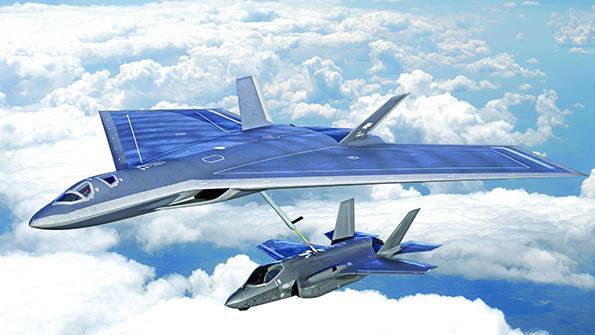USAF Secretary Eyes Early Start For Future Tanker Program
Details
More Products & Services
Products & Services
Aerospace | Aviation Week Network
Aviation Week Network
https://aviationweek.com/themes/custom/particle/dist/app-drupal/assets/awn-logo.svg
Home - Aviation Group Marketing
Aviation Week Network
120 data points on over 156,000 commercial and business aviation aircraft, including military transports. Discover the most trustworthy resource for the complete aircraft history, plus ad hoc reports, month-over-month trend analysis and details on expected deliveries through 2050.
People

Andrea Rossi Prudente
Aviation Week Network

Becca Balmes
Aviation Week Network

Belinda Tan
Aviation Week Network

Brian Everstine
Aviation Week Network
Editor

Eddie Krankowski
Aviation Week Network
Assistant Manager, Tradeshows

erving dockery
Aviation Week Network

Lisa Tan
Aviation Week Network
Senior Marketing Manager

Mark Thomas
Aviation Week Network
Description
DAYTON, OHIO—The U.S. Air Force hopes to speed up its next-generation tanker program with potential new-start authority in its fiscal 2026 budget, or even an earlier start under newly provided authorities from Congress, the service's leader says.
The Air Force expects by October to have completed an analysis of alternatives (AOA) for the Next Generation Aerial Refueling System (NGAS), a new, clean-sheet design tanker designed to be more survivable than previous refuelers. Service Secretary Frank Kendall, in a July 30 speech at the Air Force Life Cycle Management Center's Industry Days, said the AOA staff is looking at how a refueler can meet its mission in an environment where adversaries have longer range weapons.
The AOA will wrap in time for the service to make a decision for its fiscal 2026 budget, Kendall predicted. However, the Air Force could use its so-called “Quick Start” authority approved in the fiscal 2024 defense policy bill to begin work early on the program.
Under the authority, the Air Force can begin early design work through the preliminary design review, ahead of full authorization and appropriations if the defense secretary deems it important for national security.
The Air Force used its first round of Quick Start authority on efforts for space-based moving target indication. Each of the services has a share of $100 million it can allocate to the new acquisition programs.
Funding has been a question surrounding NGAS since the program was announced, with so many competing programs in the service's budget. For example, Lt. Gen. Richard Moore, the deputy chief of staff for plans and programs, said in an April conference the service has not decided on a financing plan, which likely would require money from outside the service's budget.
So far, the Air Force has only committed $8 million to NGAS for the AOA work. Kevin Stamey, the Air Force Life Cycle Management Center's program executive officer for mobility and training aircraft, told reporters July 30 he has not been tasked with exploring Quick Start authorities for NGAS. Kendall has told the directorate NGAS is a priority to be accelerated, and the authority could be an option.
The Air Force needs to make “corporate decisions” on where to go with both NGAS and the nearer term replacement plan for its Boeing KC-135s. The service had outlined what it called the KC-135 Recapitalization Program for use in buying new tankers after the final procurement of KC-46 in 2029. However, the service has not committed to it yet. Kendall said earlier this month that there has not been a final decision.
The Air Force expects by October to have completed an analysis of alternatives (AOA) for the Next Generation Aerial Refueling System (NGAS), a new, clean-sheet design tanker designed to be more survivable than previous refuelers. Service Secretary Frank Kendall, in a July 30 speech at the Air Force Life Cycle Management Center's Industry Days, said the AOA staff is looking at how a refueler can meet its mission in an environment where adversaries have longer range weapons.
The AOA will wrap in time for the service to make a decision for its fiscal 2026 budget, Kendall predicted. However, the Air Force could use its so-called “Quick Start” authority approved in the fiscal 2024 defense policy bill to begin work early on the program.
Under the authority, the Air Force can begin early design work through the preliminary design review, ahead of full authorization and appropriations if the defense secretary deems it important for national security.
The Air Force used its first round of Quick Start authority on efforts for space-based moving target indication. Each of the services has a share of $100 million it can allocate to the new acquisition programs.
Funding has been a question surrounding NGAS since the program was announced, with so many competing programs in the service's budget. For example, Lt. Gen. Richard Moore, the deputy chief of staff for plans and programs, said in an April conference the service has not decided on a financing plan, which likely would require money from outside the service's budget.
So far, the Air Force has only committed $8 million to NGAS for the AOA work. Kevin Stamey, the Air Force Life Cycle Management Center's program executive officer for mobility and training aircraft, told reporters July 30 he has not been tasked with exploring Quick Start authorities for NGAS. Kendall has told the directorate NGAS is a priority to be accelerated, and the authority could be an option.
The Air Force needs to make “corporate decisions” on where to go with both NGAS and the nearer term replacement plan for its Boeing KC-135s. The service had outlined what it called the KC-135 Recapitalization Program for use in buying new tankers after the final procurement of KC-46 in 2029. However, the service has not committed to it yet. Kendall said earlier this month that there has not been a final decision.

Share
Recent Chats
Share via email
Future: handle WhatsApp here
Future: handle LinkedIn here
Future: handle Twitter here
SUBMENU HERE
Share via Chat
Copy Link

